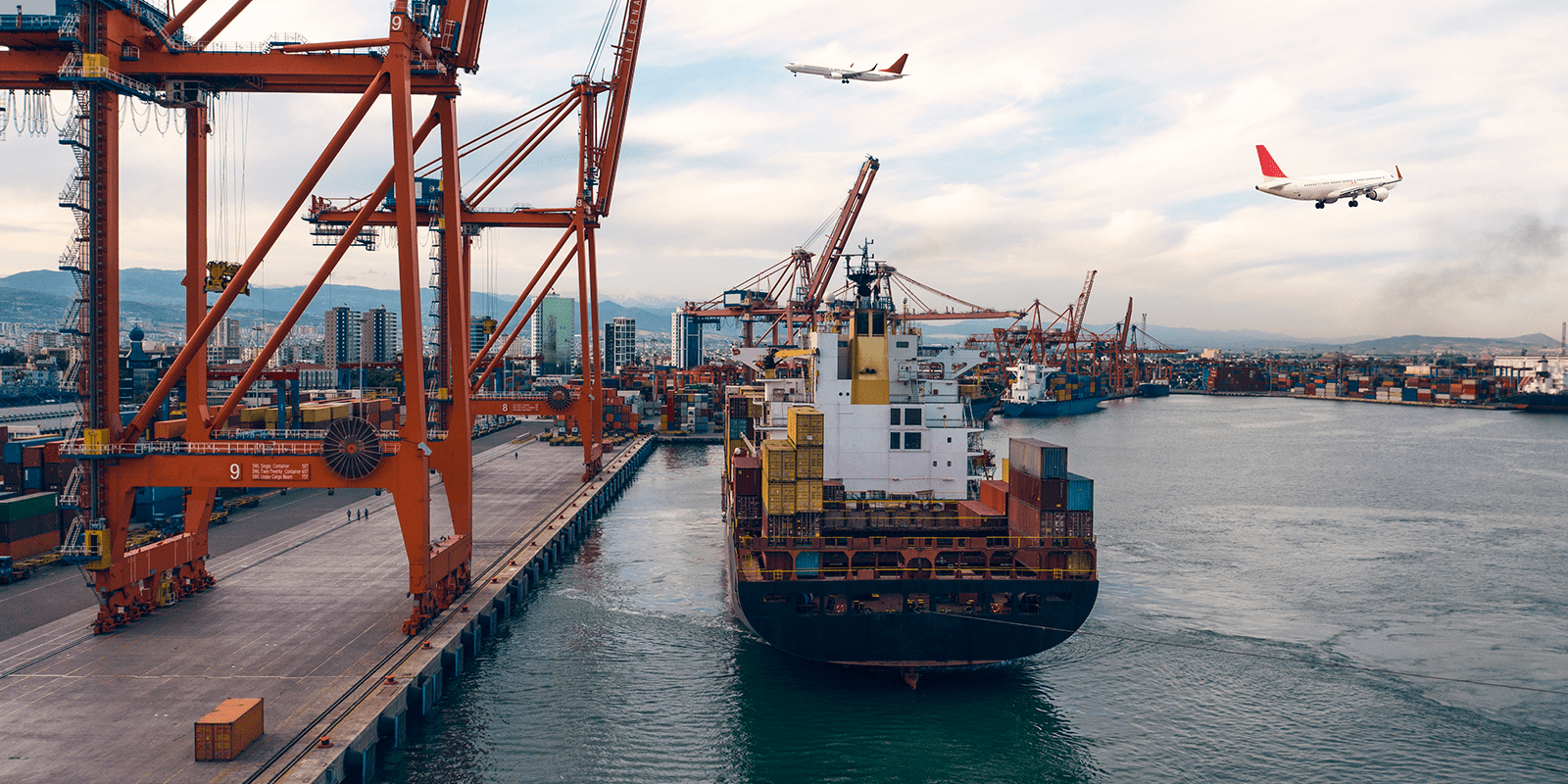
January 21, 2022
Ocean vs Air: Diversification Matters More than Ever
Tags:
Ocean vs Air: Diversification Matters More than Ever

January 21, 2022
Typically, choosing between ocean or air freight centers on speed. The tipping points for which mode to use are starting to change, though:
- Ocean is used for the huge majority of cargo shipments, but premium services are becoming vital to timely deliveries.
- Air is emerging as the key to a diversified shipping strategy to mitigate the risks of ocean. This is particularly true for fashion companies or verticals experiencing uneven demand due to recent global economic shifts.
Here, we’ll review how big-picture freight market developments could impact your decision to sail or fly your cargo.
Diversifying Modes in 2022
In 2021, we saw freight market volatility drive more goods to air. Bullwhip effects, inventory shortages, and supercharged demand were behind that.
The trend continues in 2022, but it’s not that traditional ocean shippers are totally jumping ship. Instead, Flexport sees a trend of diversification, as shippers look for ways to speed past idling container ships and congested ports.
A new approach to your modal mix can help relieve supply chain pressure:
- If you use air for some goods, you might want to use air for more.
- If you aren’t using air yet, identify high-priority goods to move more quickly.
- Run a few scenarios before booking. Discover how additional speed could impact downstream logistics and inventory turnover.
- Validate decisions with reporting. In the Flexport Platform, transit time data shows you exactly where your supply chain is lagging or clipping along.
When you’re armed with these kinds of current logistics tactics, shipping becomes less stressful, even in a troubled market.
When to Ship Ocean
Ocean is still how companies move the large majority of goods. Diversification is crucial to speed in 2022, but global air capacity is only a fraction of global ocean capacity.
The ocean market moved about 815 million TEUs in 2020. By comparison, IATA shows approximately 77 million tonnes moved in 2020. That would be roughly 3 million TEU by ocean—or about .37% of ocean cargo volume.
That means ocean is still the mode for many common scenarios:
- Choose ocean freight for replenishment stock with a predictable cadence.
- When shipping SKUs with lower or mid-range profit margins, the likely choices are FCL for high volumes and LCL for lower volumes.
- If your company is cutting carbon emissions or pursuing a net-zero goal, ocean is lower in emissions.
But as ocean freight congestion continues to threaten inventory levels, other options need to enter the mix.
“With the balance of current service levels and cost, we see more shippers diversifying their cargo shipping strategy to include a greater share of air freight,” shares Flexport Director of Ocean Trade Lane Management Nathan Strang. “But clients do need ocean solutions, so I recommend premium services.”

Premium services offer more service levels for more control. With Flexport, shippers can choose from six ocean options, including guaranteed services, to customize a shipping strategy based on inventory needs.
When to Ship Air
Air is far faster, and some goods—like luxury items, electronics, or inventory for a product launch—need to get to their destinations quickly and on time.
Cargo recovery from airports can be quick compared to logjams at ocean ports, too, even with relatively new air cargo screening rules.
Here are a few situations where you could benefit from switching to air freight:
- Products with shorter life cycles can’t wait for ocean delays. Seasonal hard goods, some fashion capsules, and electronics accessories are ripe for moving from ocean to air.
- When demand spikes clear out inventory, air freight ensures business continuity and helps support customer trust in your company. Building materials or some furniture and appliances, for instance, have experienced high consumer demand.
- If your goods are produced in regions impacted by pandemic-related shutdowns, air freight is the easiest way to get supply chain schedules back on track. Make up for lost time at the factory by benefiting from air freight’s rapid transit times.
Scaling Air Freight
One of the insider tricks to making the most of air freight is scalability. You don’t need to shift all cargo to air. It’s unlikely that’s financially feasible for many companies.
Refining your modal mix to match your demand curve is the way to go. When demand signals heat up or supply gaps need to be covered, take to the air.
Limit your modal shift to the products that need it most and you’ll capitalize on opportunities while staying closer to budget.
Some shippers are weighing the options and finding new ways to make ocean shipping work for them—even amid congestion—but others are landing on air freight for more of their cargo than before.
Learn more about how Flexport can take you from order to uplift in no time with air freight solutions.
About the Author

January 21, 2022


